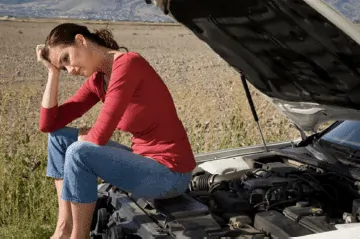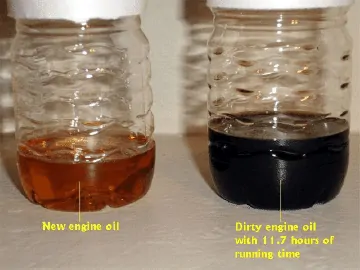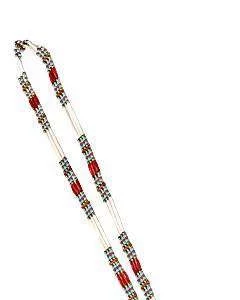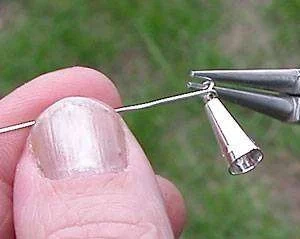Lots of us depend on our cars! That's how we get to the next Pow Wow, how we get to work, how we get home.
Don't let your car turn into the Rez Ride from Smoke Signals! Drive to Gathering of Nations next year in reverse will be tough!
Our friends at Chad Miller Auto Care have their Top 5 Tips below for preparing your car for the next Pow Wow Road Trip!
Nobody likes being stranded on the side of the road—especially during a long road trip! With a full schedule of Native American Pow Wows across Indian Country, many people are planning long road trips. If you are one of those people or if you are planning a last-minute summer vacation, there are some things you (or your trusted mechanic) should do to prepare for the trip so you don't end up stranded.
I've always found that acronyms help me remember things, so I've created one for the top 5 things you
should check at least a week before hitting the road—”Very Bad Boys Break Things”:
- Vital Fluids
- Battery
- Brakes
- Belts/Hoses
- Tires
TIP #1: Check Your Vital Fluids
It is essential to check your vehicle's fluid levels and make sure they're all within the proper specifications, which can usually be found in the owner's manual. Here's a handy guide for fluids, their colors, and what happens if you don't maintain them:
- Engine oil should be black or brown.
- Engine will work much harder and wear out much quicker
- Dirty oil will start to erode engine parts
- Engine will grind and seize up.
- Your vehicle will die. You will be stranded.
- Coolant can be purple, pink, yellow, blue, or green.
- Low level means the coolant going into the radiator has less time to cool down and recycle to the engine
- Engine will overheat.
- Your vehicle will die. You will be stranded.
- Transmission fluid can be either red or green.
- Vehicle will jerk or slip when changing gears
- Vehicle might randomly change to neutral without warning
- Vehicle might speed to high RPM while in neutral or without the vehicle actually speeding up
- Your vehicle will die. You will be stranded.
- Brake fluid can be either clear or light yellow.
- Brake pedal will not have enough fluid to push through the braking system
- Brakes will fail
- Your vehicle will die. You will be stranded.
- Power steering fluid should be red.
- Power steering pump will overheat and start squealing or whining
- Vehicle will be much more difficult to steer
- Bearings will fail and pump will seize up
- Your vehicle will die. You will be stranded.
- Windshield washer fluid can be blue or orange.
- Your dirty windshield will stay dirty
- Your vehicle probably won't die and you probably won't be stranded.
With all of these, if the fluid is dark, dirty, and/or gritty, it is time to change it.
Don't let it get this bad!
TIP#2: Check Your Battery
One of the most common things that strands people on the side of the road is a dead battery. It is a good idea to check your battery before going on a road trip. The cables should be tight and snug around the terminals. Also, check the wires to see if the rubber coating is cracked or missing in places. The battery terminals should be clean—no corrosion, dirt, monkeys, etc.Your trusted mechanic can test the voltage of the battery for you, but in case you are more of a
Your trusted mechanic can test the voltage of the battery for you, but in case you are more of a hands-on kind of person, here's how to do it yourself (I got this info from Geeks of Cars):
- Make sure the engine is not running. Unhook the positive and negative terminals. Remove the bracket bolts. Remove the battery.
- Use a volt meter to check how many volts the battery has. Hold the volt meter to the car battery's positive and negative terminals, using the volt meter's color-coded prongs; red goes to the positive terminal and black goes to the negative terminal. The volt meter's display should read about 11 to 13 volts.
- If your car battery reads less than 11 volts on the volt meter, it needs to be charged completely on a battery charger. Choose a setting between 20 and 40 amps; this will charge the battery in a couple of hours. The battery charger will indicate when your car battery is completely charged.
- Once your car battery is fully charged, use the volt meter to recheck the voltage by conducting what's called a load test. Hold the prongs of the volt meter to the corresponding battery terminals and watch the volt meter while someone else starts your car. Make a note of how low the battery voltage drops. A normal car battery will drop to 10 or 11 volts. If your battery voltage drops below 10, this is a sign that it needs to be replaced.
- If your car battery has passed the load test—meaning it did not drop below 10 volts during the test—reinstall the battery.
TIP #3: Check Your Brakes
If it’s taking longer than normal for your car to stop, your brakes are squeaking, or your vehicle is pulling to one side when you brake, you need to get your brakes checked before a road trip. It may be solved with a fluid check, but it could also be an issue with the rotors, pads, drums, cylinder, etc. You certainly don't want to be in a position where you either cannot brake at all, or you end up stranded on the side of the road in the middle of nowhere. Just remember: Before a trip, you takes, have someone check the brakes.
TIP #4: Check Your Belts/Hoses
You can do a couple things to check your belts/hoses. First, you can do a visual inspection. If the belts are cracked, rough, or have chunks missing from them, you definitely need to have them replaced. Second, you can do a “squeeze test.” Feel the hoses for bulges, cracks, or evidence of leaks. Squeeze them to see if any of them feel soft or brittle. If they do, you definitely need to have them replaced.
TIP #5: Check Your Tires
If your feet are worn out, uneven, slippery, or have holes in them, you're not going to walk very far before you have to stop. Tires are the feet of a vehicle. Before you start traveling, check your vehicle's feet to see if they have any uneven wear. Check the tread to see if it is thick enough (thicker than the thickness of a penny should be ok). Check the air pressure using a pressure gauge, and compare it with the recommended air pressure in your owner's manual or on the inside of your door where the VIN number is located. If the pressure is too low, add air, and then listen for leaks.
Fun trick: If you can't see a hole, but you hear a leak, you can spray water or some other kind of liquid from a spray bottle onto your tire. If there's a leak, you'll be able to see it with the liquid.
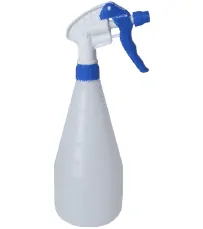
Enjoy Your Trip
There are so many opportunities to help renew Native American culture and preserve the rich heritage of American Indians. You may be planning to go on a long road trip to do that or just to get the last bit of relaxation you can out of the summer. Whatever the reason, as long as you remember “Very Bad Boys Break Things” and check all the fundamental components of your vehicle before you hit the road, you should have a smooth ride to your destination!
AUTO KNOW FOR THE AVERAGE JOE
Auto Know for the Average Joe is a bi-weekly auto repair and maintenance blog produced by Chad Miller
Auto Care in San Antonio, TX. In the near future, they will also be producing a podcast called CarChat.
You don't have to live in San Antonio to participate in either the blog or the podcast! Just leave
comments, questions, and/or topic suggestions in the comment section of the blog or call our voicemail
at 731-CAR-CHAT (731-227-2428)!

